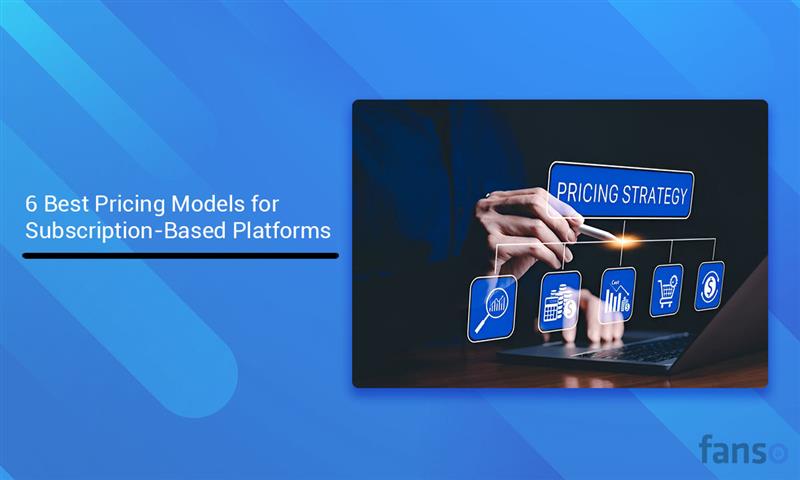Subscription businesses are well-known for offering value to customers and their recurring income. But to gain significant profits, you need a killer pricing strategy. One that sets a predictable revenue and strengthens customer relationships.
In this blog, we explore the top pricing models, their pros and cons and best practices for integration. If you’re looking to capitalize on the subscription model, get ready for valuable insights to start your entrepreneurial journey!
Here’s what you’ll learn in this guide:
- Common pricing strategies for a subscription platform
- Top pricing models for subscription-based platforms
- Factors for Choosing the Right Pricing Model
Table of Contents
What are the Common Pricing Strategies for a Subscription Platform?
Deciding the monetization model involves a lot of research and testing. There are multiple factors to consider, including customer perception, market positioning, and revenue generation, etc.
Here are the common strategies to determine a monetization model:
-
Cost-Plus Pricing
The traditional pricing strategy is one where you consider the production cost, market research, and profits. It is applicable when the production cost is high in your business. However, this is not the sole driver of your subscription platform. Also, it’s not suitable for enterprise software.
-
Competitive Pricing
When you are new to the market, setting up your pricing based on competitors’ offerings sounds practical. The goal is not to offer the cheapest, but to justify the price point. However, it’s often difficult when market research is tedious.
-
Demand-based pricing
Here, the pricing is based on the market demand fluctuations. Thus, when the demand is up, the pricing goes up. On the other hand, the demand is low, and the pricing goes down. Increased profitability and customer satisfaction are the advantages of demand-based pricing.
-
Value-based Pricing
If you know your product’s value, this pricing is the right fit. You don’t need to decide your price tag based on your competitor’s offering, but based on the perceived value customers have about your offerings. This is a customer-centric, strategic, and adaptable approach.
Top Monetization Models for Subscription-Based Platforms to Bank on
Here are the best monetization models for a subscription-based platform:
1. Flat-Rate Subscription
One of the simplest pricing models for subscription-based platforms is the flat rate model. A fixed price is charged to access all the content or features on a recurring basis. Now, this pricing could be monthly, quarterly, or yearly, and doesn’t depend on your product usage.
This is much like how Netflix works — one price, unlimited streaming. One of the most essential aspects of this model is simplicity and predictability. Another key aspect is unlimited access to content as much as you desire.
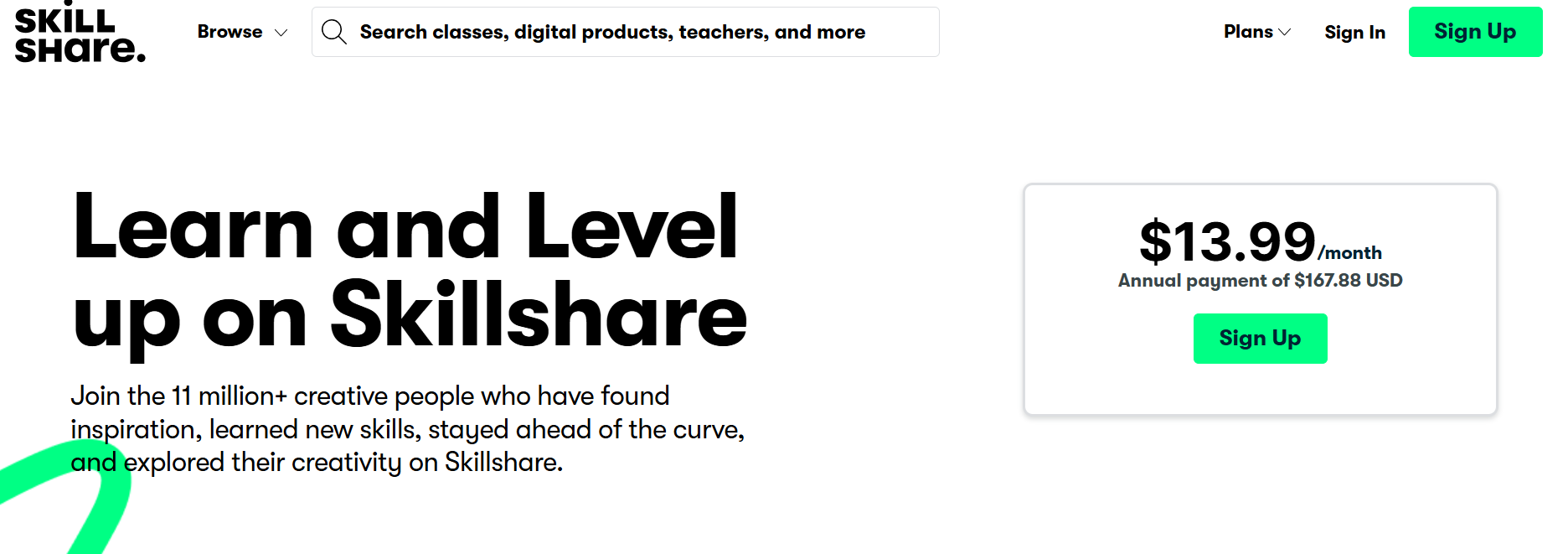
Pros:
- Simplicity and fixed pricing for all customers
- Communicating the pricing is easy for businesses
- Predictable monthly revenue
- Shortens the billing cycle, making marketing and invoicing easier
- Reduced customer acquisition cost
Cons:
- A one-size-fits-all strategy doesn’t distinguish between small and big businesses
- Doesn’t offer much personalization, and it doesn’t scale with users or growth
- Large customers with increased usage can lead to higher consumption costs
Who’s it for?
Perfect for early-stage users, single-feature tools, and content libraries
Examples:
Netflix, MasterClass, Skillshare
Best Practices:
- Provide a value-driven service as per the customer persona
- Offer bundled services, such as customer support, updates, and community access
- Works best when your product has a unified set of features with no variation in value obtained by different users
- Monitor usage to identify potential churn or upsell opportunities
2. Tiered Subscription
Does your subscription platform offer multiple features or customer segments? Layer your subscription based on features, usage, or user volume. In fact, the Harvard Business Review states that the good-better-best tiered pricing is a straightforward tiered pricing approach.
Customers can access 2-5 tiers, each offering unique features or services based on their needs. The tiers are in incremental order of pricing or value. And each tier is designed for a specific segment of the audience.
The tiered pricing model is preferred by SaaS and e-commerce businesses. The three common pricing models are: basic, premium, and enterprise. This model is versatile as it can be tailored to customer needs. They can select the right plan based on their needs and budget.
Different types of tiered subscriptions:
- Feature-based (Value-based): Each tier is categorized based on unique features available at varying price points.
- Usage-based (pay-as-you-go): Here, the subscription product or service is charged based on the volume of consumption. The metric could be the number of servers, processing calls, or seats.
- Dynamic Tiers: Businesses can adjust their pricing based on different market conditions. This involves fluctuations in market demand, inventory levels, customer type, etc.
How to decide tiers for subscription?
Building a tiered subscription needs some thought. The basic aim is to drive the perceived value with increasing tiers to justify the increasing price point. First, the subscription business must categorize the audience into different segments. Choose a metric (e.g., usage, time, or feature ) for setting up tiers. Then, add the features in each tier based on the corresponding price.
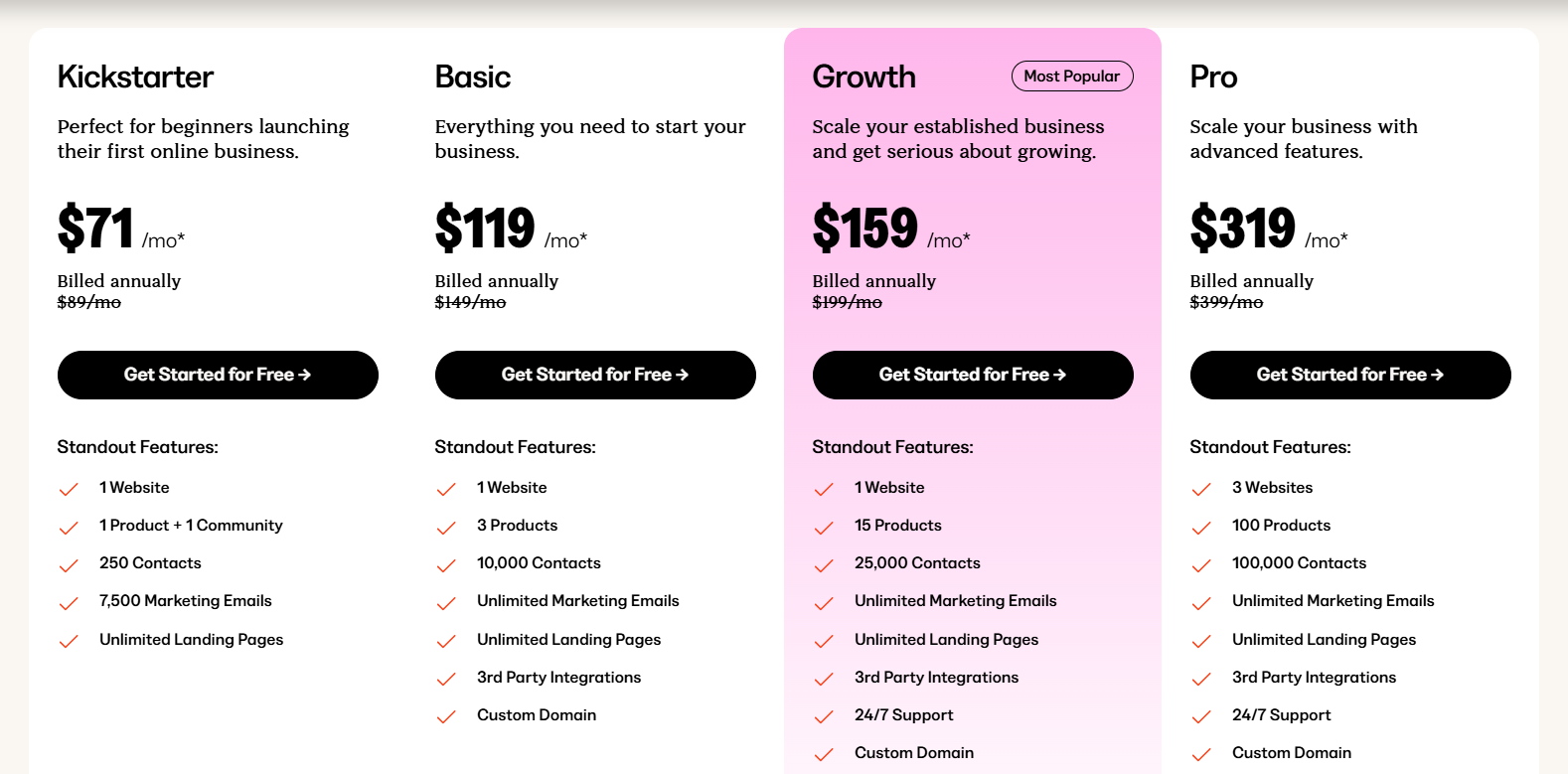
Pros:
- Appeals to different audience segments and offers customer choice (basic to enterprise users)
- Cost flexibility for both existing and new customers
- Increased upselling opportunities to existing users
- Personalize user experience based on user needs and expectations
- High revenue potential from a wide range of users
- Offer exclusive benefits and loyalty benefits in higher tiers
Cons:
- Too many tiers can be confusing leads to decision fatigue
- Increased complexity for management and billing
- Changing different pricing tiers to any tier is challenging
Who’s it for?
Best for niches like SaaS, course marketplaces, and AI tools. Tiered pricing is perfectly suited for feature-rich products, diverse segments, and growth-focused businesses.
Examples:
Kajabi, Dropbox, Drift, Skillshare (Teams)
Best Practices:
- Perform market research to understand your target audience and market better
- Ensure each pricing tier offers unique value
- Make the middle pricing tier is most appealing (the decoy effect)
- Offer transparent upgrade paths to make the transition to higher tiers seamless
- Combine perks with features in each tier
2. Freemium
Want to make the path to premium seamless? The freemium model allows users to get a hand on your product before the actual use.
Freemium (“free+ premium”) involves two approaches: basic product access at no cost and premium access as an advanced upgrade (optional). Many subscription platforms have adopted the freemium model, given the low barrier of entry.
Further, businesses can monetise with advanced features and enhancements. While users get a grasp of the core product, you can nudge them to buy the full version.
Popular music streaming platform Spotify allows users to listen to music tracks for free with ads and less functionality. Further, users can upgrade to a premium subscription with offline listening, unlimited skips, etc.
Paid subscriptions, ads, usage-based or tiered pricing, and one-time purchases are the different ways to earn revenue in the freemium model.
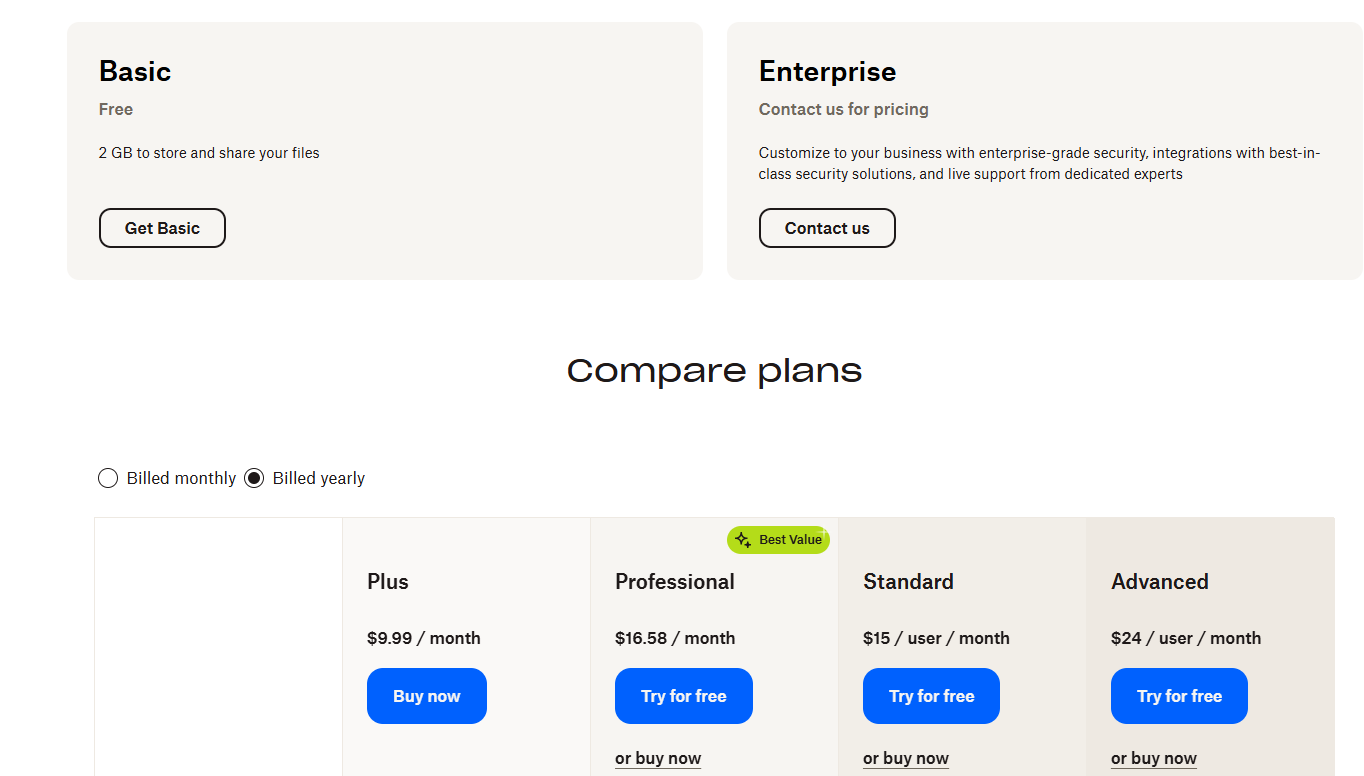
Pros:
- Low barrier for user acquisition
- Businesses can easily build a large customer base
- Decide which premium features to develop in the future
- Include multiple monetization streams like ads, in-app purchases, premium upgrades, and enterprise plans
Cons:
- Low conversion to actual users (2-10%) compared to free trials
- Needs a high budget to support a large number of users
- Many are freeloading users who don’t intend to purchase the full version.
Who’s it for?
Best-suited for SaaS, content platforms, productivity & utility apps, gaming, etc.
Examples:
Best Practices:
- Focus on balancing value with limitations in your basic product
- Use clear upgrade nudges like hit usage limit, unlock premium tools, etc.
- Track conversion metrics like free-to-paid conversion, churn reasons, to optimize based on user behaviour
- Nurture free user with onboarding and education
3. Credit-Based System
If you’re looking for something between the flat-rate pricing and usage-based model, the credit-based system is a smart choice. Customers can buy credits by paying for a portion of the service in advance and redeem them later. This offers flexibility and ensures the cost is paid in advance.
Sounds complex? Let’s say you run a cloud communication platform like Twilio for audio and video streaming. Instead of charging users for per-unit usage, you can sell credits in a subscription plan. Each credit can be later exchanged for a unit of service.
Further, platforms could even sell monthly or annual bundles of services that can be used as per convenience. Businesses could map services like “1 credit = 1 API call” or 1 credit = 1 stock photo.
Some platforms even offer options to top up and roll over unused credits. For example, Audible offers a maximum of 6 credit rollovers, available within the premium plus plan.
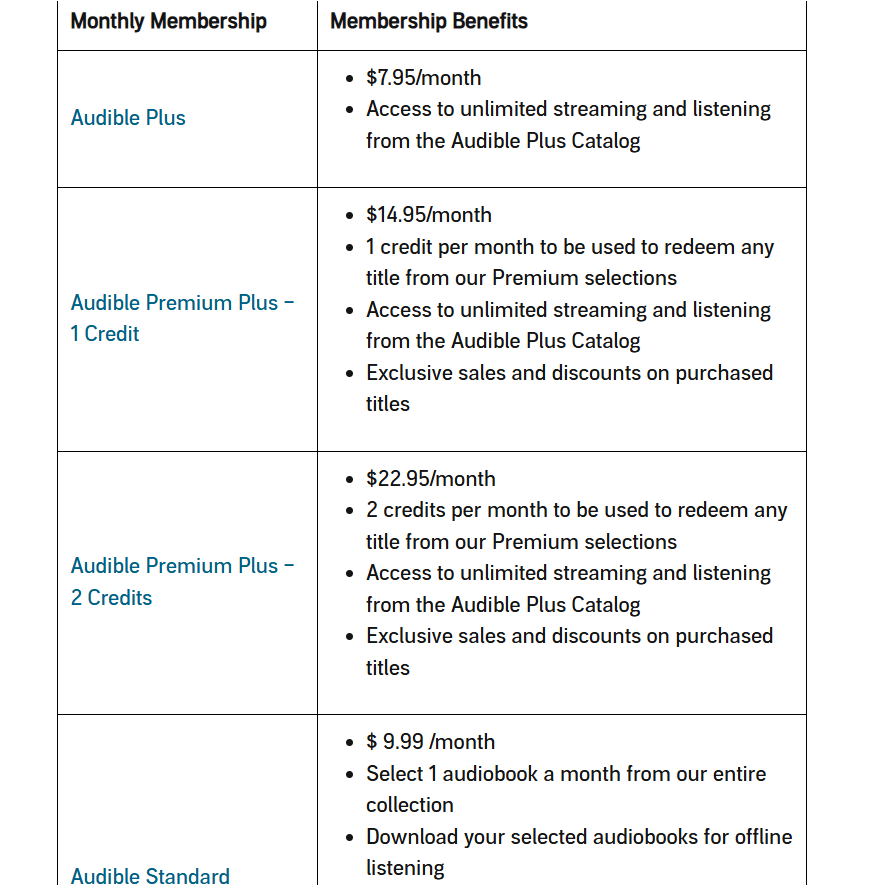
Pros:
- Predictable revenue as users pay for credits in advance
- Customers get flexible usage as compared to rigid tiers
- Upselling potential with top-up credits
- Easier to market and communicate the benefits of your service
Cons:
- Customers might find it challenging to understand the credit system
- Mapping credit values with actual prices could be tedious for businesses
- Demands accurate tracking to avoid overcharging or undercharging
- Hoarding credits and using them together creates unpredictable usage patterns
Who’s it For?
Businesses with complicated usage patterns like communication services, API and data services, stock photo and media platforms
Examples:
Audible, Shutterstock, Adobe Stock, Skillshare
Best Practices:
- Match credit cost with content value
- Define a clear and easy-to-understand credit value
- Create tiered subscription plans with unique bundles and credits
- Integrate top-up and roll-over credits into your pricing model
4. Pay-Per-User
A common pricing model in the SaaS industry is pay-per-user charges based on the number of users or seats on an account. Businesses pay a recurring subscription fee up to X users and additional dollars for every user.
Simplicity and scalability are two main advantages of the pay-per-user model. The more the number of users, the higher the fee; the fewer the number of users, the lower the fee.
Scalability is intuitive in this model. As the team size grows, businesses can easily add new users and pay exactly for what they are using.
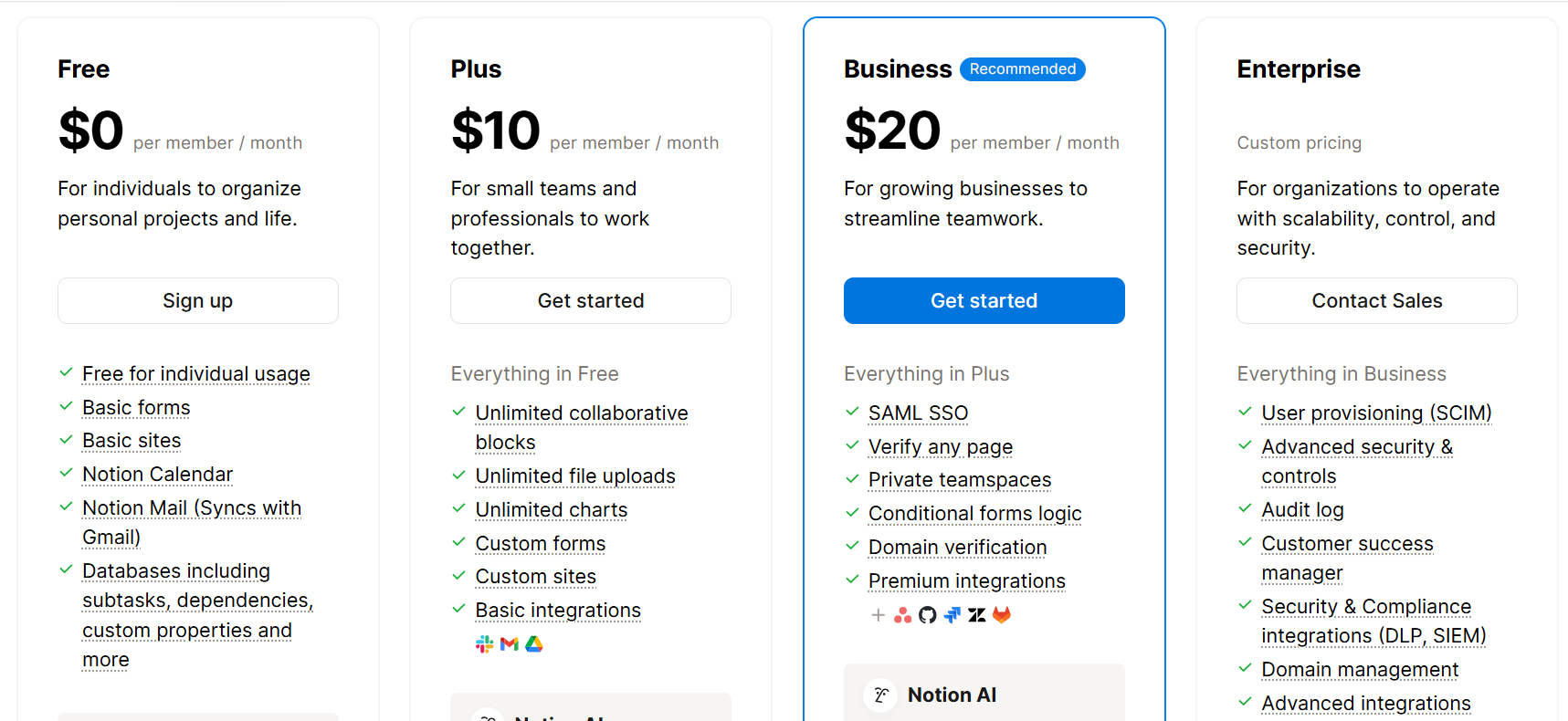
Pros:
- Simple and straightforward for both providers (platforms) and customers
- Easily scale by adding new users as your team or project size grows
- Offers a steady revenue stream with customer growth
Cons:
- Unpredictable cost and billing based on high usage
- For heavy-duty businesses, more usage costs more than a flat-rate pricing model
- Balancing fixed vs. variable costs requires adjusting cover charges
Who’s it for?:
Platforms where usage costs significantly increase for more users and different customer tiers need varying levels of support.
Examples:
Slack, Teams, Notion, Asana, Trello
Best Practices:
- Combine per-user pricing with other pricing models
- Evaluate your pricing strategy and optimize it with Average Revenue Per User (ARPU)
- Offer per-user pricing as an add-on if your product isn’t team-based
5. Usage-Based
As the name suggests, usage-based pricing charges users based on their actual consumption of the service or product. It is also known as “metered pricing” or “pay-as-you-go”.
This is adept for businesses where the usage cannot be predetermined. For example, cloud services, APIs for voice & video calling like Twilio, adopt this pricing model.
On the upside, platforms can earn a higher revenue from high-value customers. A key advantage for customers is effective cost management and higher profit margins.

Pros:
- Earn higher revenue from customers with more consumption
- Align your platform with customer success
- Offer low-upfront cost for businesses with low usage
- Higher lifetime value for customers with more usage
Cons:
- Unpredictable revenue
- Complex billing and needs accurate metering, reporting and tracking systems
- Difficult to market your platform as compared to flat-rate pricing
Who’s it for?:
Platforms with products or services having varying usage, like cloud services, voice and video streaming APIs, and communication APIs.
Examples:
Best Practices:
- Define the right usage-based metric, like GB storage, API calls, or price/tokens
- Offer discounts for higher volumes of usage (with volume tiers)
- Provide dashboards, alerts or notifications about the usage
What are the Factors to Choose the Right Pricing Model?
The long-term growth of your subscription business depends on choosing the right pricing model. Considering a few factors helps to make the right decision for your business.
Ask these questions to choose the right monetization model:
-
Who are your customers?
Research about your target audience and their needs, expectations and behaviour. For example, your clients could be small businesses or huge enterprises. Understand the best way your service could align with their business needs.
-
What are the trends, opportunities and challenges in the market?
Analyze your competitor’s offerings and pricing models. Check if they are using the same pricing strategy and price range. Thus, you can find what your customers are willing to pay. Lastly, stay adept with the current trends and industry gaps to gain a competitive advantage.
-
How do customers get value from a business?
Consumer behaviour significantly influences your decision to choose a specific pricing model. Find patterns in terms of usage of your platform. Your consumers might access on a continuous, periodic or variable basis. Define your subscription plans to match their usage.
-
Does the pricing strategy help you reach your goals and profits?
Of course, you can’t neglect your financial goals in the decision-making process. While balancing value with price, make sure the pricing model retains profits. The occasional usage spikes shouldn’t affect your long-term growth.
Conclusion
Running a successful subscription-based platform involves building a subscriber-centric business while thinking about platform growth. While finding the right pricing strategy is halfway through, nailing the right price to charge helps you stay in the game!
Prioritize customer needs and expectations to select the right monetization model. Most importantly, choose a scalable model from the start that adapts to your evolving business needs.
We hope these strategies and steps define the right narrative for your subscription platform!
⚡Related Blogs:
FAQ-Related to Monetization Models for Subscription-Based Platforms
1. What is the best pricing model for a subscription-based platform?
Subscription-based models don’t adopt a one-size-fits-all approach for pricing. Instead, their pricing strategy depends on the target audience, content, value proposition and financial goals.
Here are pricing models for subscription-based platforms:
- Flat-rate pricing
- Tiered subscription
- Freemium
- Credit-based pricing
- Pay-per-user
- Usage-based pricing
2. How to monetize from freemium users?
Use in-app purchases, ad-free access, premium subscriptions, and usage limits to monetize from premium users. On the other hand, earn from the user base through ads or sponsorships.
3. How to choose subscription pricing?
Consider factors like fixed and variable costs, business model, value, and customer acquisition cost to determine the subscription pricing strategy. The right pricing balances costs with outright customer value.

